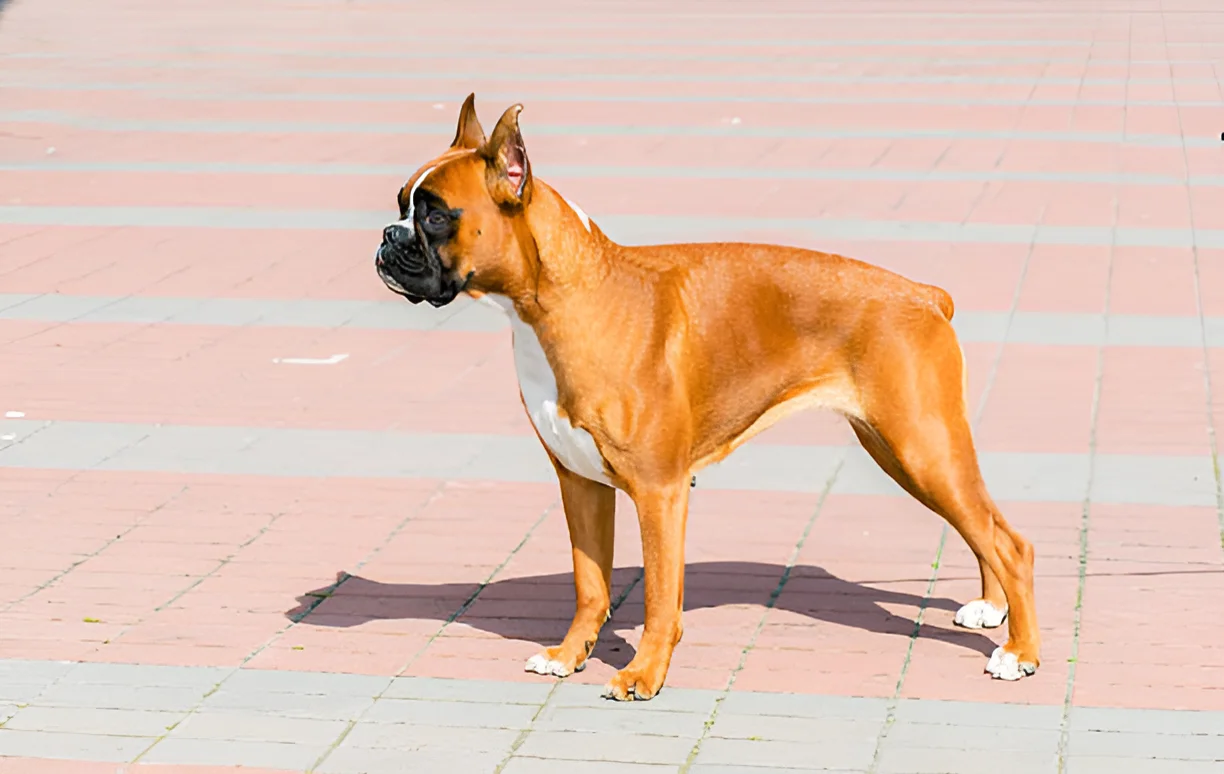Yes, Boxers were used as police dogs, particularly in Germany, due to their intelligence, strength, and trainability. Understanding their history, characteristics, and the roles they played in law enforcement can provide valuable insights into this versatile breed.
Boxers are a well-loved breed known for their playful nature, loyalty, and distinctive appearance. While they are often seen as family pets today, Boxers have a rich history as working dogs, including roles in law enforcement. This comprehensive guide will explore the history of Boxers as police dogs, their characteristics that made them suitable for this role, and their contributions to law enforcement. Whether you’re a seasoned Boxer owner or simply curious about the breed, this article will provide valuable insights and practical information.
The History of Boxers
Boxers were developed in Germany in the 19th century, primarily from the now-extinct Bullenbeisser and the English Bulldog. They were initially bred for bull-baiting and later used by butchers to control cattle. Over time, their roles expanded to include hunting, guarding, and eventually, police work.
Origins and Development:
- Bullenbeisser Ancestry: The Bullenbeisser, a powerful and agile dog, was a key ancestor of the Boxer. This breed was known for its strength and tenacity, traits that were passed down to the Boxer.
- English Bulldog Influence: The English Bulldog contributed to the Boxer’s muscular build and distinctive underbite.
Transition to Police Work:
- Early 20th Century: By the early 20th century, Boxers were recognized for their intelligence and versatility, making them suitable candidates for police work.
- German Police Dogs: Boxers were among the first breeds used by the German police for various tasks, including apprehending suspects and search and rescue missions.
Characteristics That Made Boxers Suitable for Police Work
Several characteristics made Boxers well-suited for roles in law enforcement. These traits include their physical abilities, intelligence, and temperament.
Physical Abilities:
- Strength and Agility: Boxers are strong and agile, capable of performing physically demanding tasks such as chasing and apprehending suspects.
- Endurance: Their high energy levels and endurance allow them to work for extended periods without tiring.
Intelligence and Trainability:
- Quick Learners: Boxers are intelligent and quick to learn commands, making them highly trainable for various tasks.
- Problem-Solving Skills: Their problem-solving abilities enable them to handle complex situations and adapt to different scenarios.
Temperament:
- Loyal and Protective: Boxers are known for their loyalty and protective nature, which are essential traits for police dogs.
- Alertness: Their alertness and keen senses make them effective at detecting and responding to potential threats.
Roles of Boxers in Law Enforcement
Boxers have served in various capacities within law enforcement, demonstrating their versatility and reliability.
Apprehending Suspects:
- Chasing and Subduing: Boxers were trained to chase and subdue suspects, using their strength and agility to apprehend individuals attempting to flee.
- Controlled Aggression: Their ability to exhibit controlled aggression made them effective at deterring and capturing suspects without causing unnecessary harm.
Search and Rescue:
- Tracking Skills: Boxers’ keen sense of smell and tracking abilities were utilized in search and rescue missions to locate missing persons.
- Endurance in Difficult Terrain: Their physical endurance allowed them to navigate challenging terrains during search operations.
Guarding and Protection:
- Guarding Property: Boxers were used to guard property and protect valuable assets, leveraging their protective instincts and alertness.
- Personal Protection: Their loyalty and protective nature made them suitable for personal protection roles, safeguarding their handlers and other individuals.
The Evolution of Boxers in Society
While Boxers have a history of working in law enforcement, their roles have evolved over time. Today, they are primarily known as loving family pets and companions.
From Working Dogs to Family Pets:
- Adaptability: Boxers have seamlessly transitioned from working dogs to family pets, adapting to various roles in society.
- Companionship: Their affectionate and playful nature makes them excellent companions for families and individuals alike.
Continued Versatility:
- Service and Therapy Dogs: Boxers continue to demonstrate their versatility by serving as therapy and service dogs, providing emotional support and assistance to those in need.
- Sports and Competitions: Many Boxers participate in dog sports and competitions, showcasing their agility, intelligence, and athleticism.
Conclusion
Yes, Boxers were used as police dogs, particularly in Germany, due to their intelligence, strength, and trainability. Understanding their history, characteristics, and the roles they played in law enforcement can provide valuable insights into this versatile breed. By appreciating the contributions of Boxers to law enforcement and their continued versatility, we can better understand and celebrate the unique qualities of this remarkable breed.
The photo featured below the post headline is Credit: volofin/istockphoto
I hope you find this post helpful and informative. If Yes’ feel free to share it with your friends!
Frequently Asked Questions
Were Boxers used as police dogs?
Yes, Boxers were used as police dogs, particularly in Germany, due to their intelligence, strength, and trainability.
What characteristics made Boxers suitable for police work?
Characteristics that made Boxers suitable for police work include their physical abilities, intelligence, trainability, loyalty, and protective nature.
What roles did Boxers play in law enforcement?
Boxers served in various roles, including apprehending suspects, search and rescue missions, guarding property, and personal protection.
Are Boxers still used as police dogs today?
While Boxers are not as commonly used as police dogs today, they continue to demonstrate their versatility in roles such as therapy and service dogs, as well as participating in dog sports and competitions.
How have Boxers’ roles evolved over time?
Boxers have transitioned from working dogs to family pets and companions, showcasing their adaptability and continued versatility in various roles.

